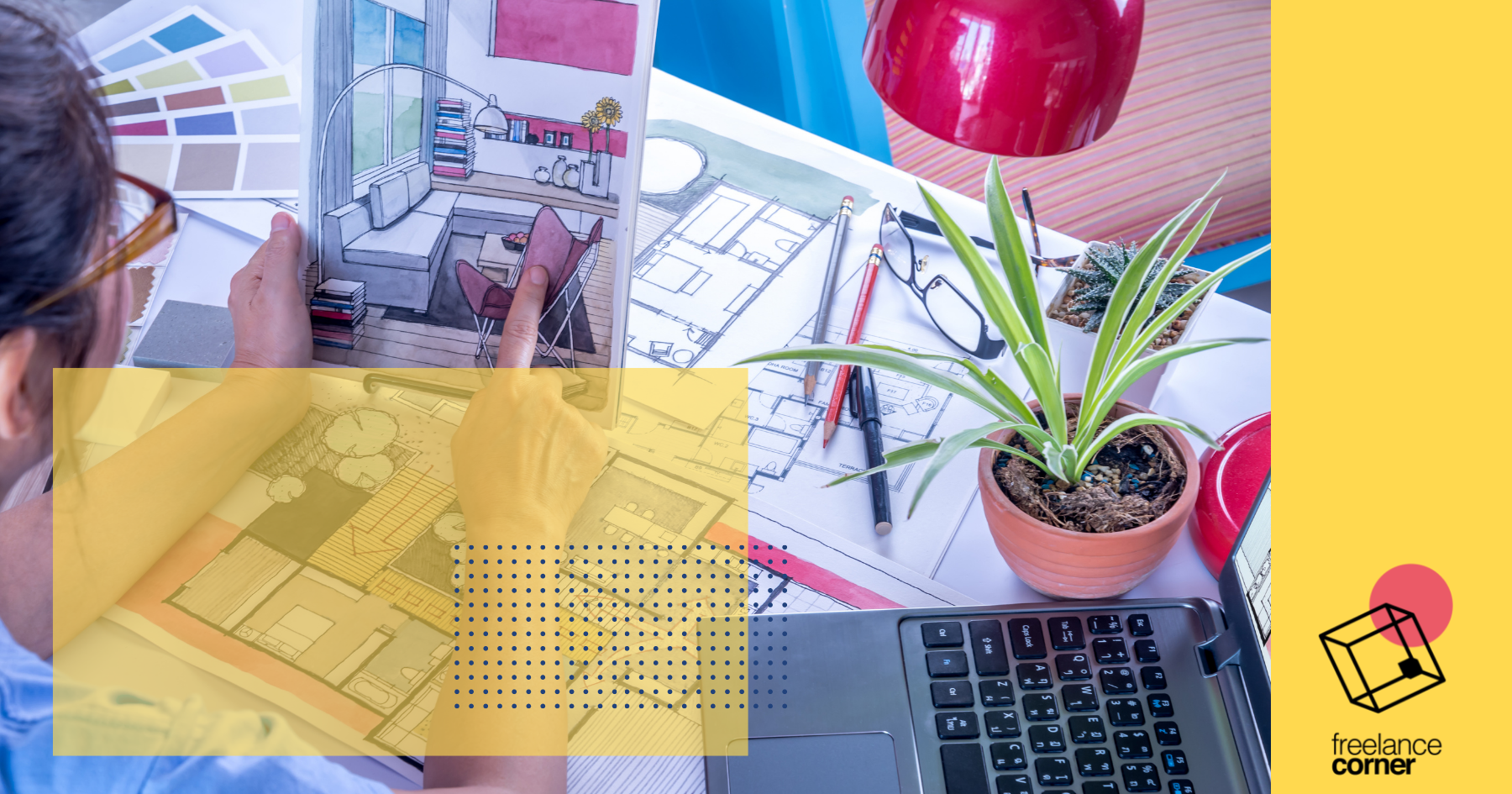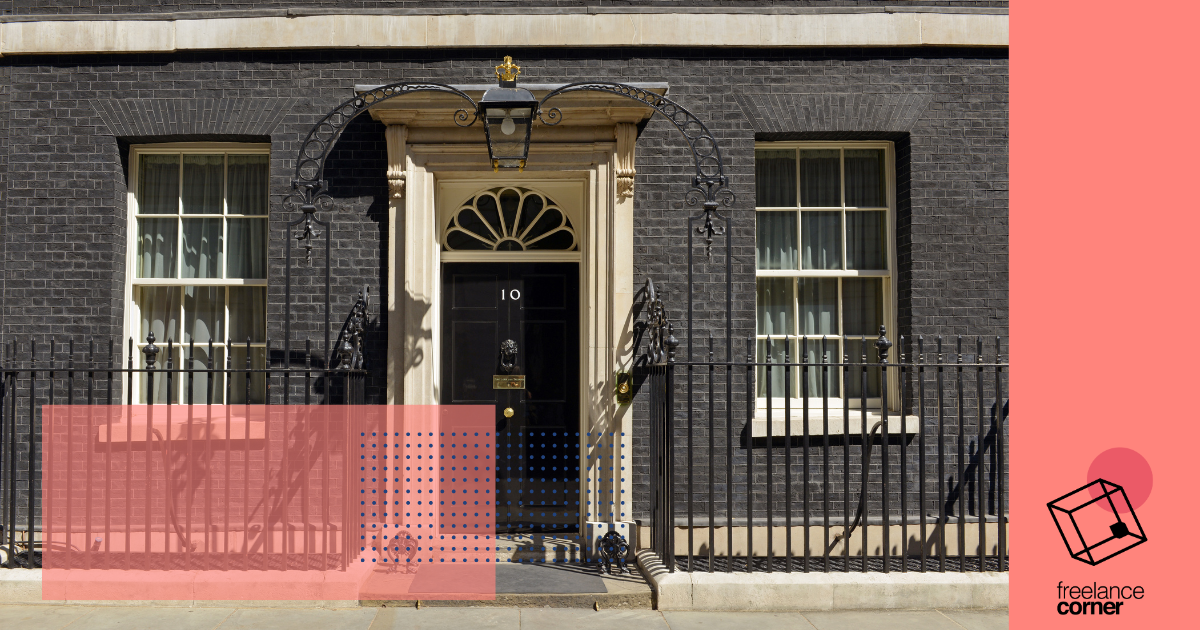Can you turn a house into a home, or adjust the layout of an office to make it a better place to work? If you enjoy creativity and design, then find out how to become a freelance interior designer to build a career working on projects ranging from family homes to offices, hotels or boutique shops.
Becoming self-employed allows you to focus on a specific industry or style, whether it’s creating modern family homes or vintage accommodation. Or you can choose particular interior design services to offer, which can be delivered in-person, or entirely online. All of this means you can build an income in a way which gives you the most enjoyment, and fits with any other commitments you might have.
- What does a freelance interior designer do?
- What skills or qualifications do freelance interior designers need?
- How much can you earn as a freelance interior designer?
- Finding your first clients
- More resources and support to become a freelance interior designer
What does a freelance interior designer do?
Broadly speaking, a freelance interior designer will be hired to improve the inside of a building from planning to execution. The objective is normally to make it more aesthetically pleasing, but it might also involve health benefits, or using space more effectively.
Tasks ranks from developing concepts, site inspections, research, and managing any construction. So, you may be creating paint palettes, mood boards and renderings, setting out floor plans, and developing the shopping list of furniture and other items to deliver your vision within the budget set by your client.
A lot of the planning stages are potentially deliverable online, so if you’re looking to specialise in e-design, this is where you may want to focus. And there are even virtual interior designers who now specialise in decorating spaces in virtual worlds, whether in The Sims, Minecraft or new metaverse projects.
If you’re offering a complete interior design service, then you may be dealing with manufacturers and suppliers to ensure you get the right products, and working with architects, builders or contractors to make significant changes to a property.
Projects available for freelance interior designers include renovating or changing a private family home, or making improvements to help the property sell. Or working with businesses including hotels, healthcare providers, offices, shops, cafes or pretty much anywhere a building can benefit from a better look and feel.

What skills or qualifications do freelance interior designers need?
There’s no specific qualification required to become a freelance interior designer, and some well-known names in the industry have succeeded without formal training. But while your skills and experience will be the main selling points, it’s easier to demonstrate your abilities and get your first work if you have some relevant education.
It’s possible to study for a Bachelors degree in Interior Design at a variety of UK universities, or a related field such as applied visual arts, fine arts, 3D design or architecture. Any of these will help you get work experience or your first clients, and it’s possible you could start your freelance career whilst studying to build your practical knowledge. Alternatively, it’s possible to then go onto a Masters degree.
There are also a range of City and Guilds or BTEC qualifications available in Interior Design, Design and Craft, Art and Design and more which are also widely recognised.
Industry training organisations include the National Design Academy, the British College of Interior Design, or the British Academy of Interior Design. It’s important to thoroughly research any courses or training before committing your time and money, and relevant trade bodies which can help with this include the British Institute of Interior Design, and the Society of British and International Interior Design.
Shorter courses, or those offered by established professionals, can still be helpful, especially if you need to learn a very specific skill. If you’re primarily dealing with digital designs, for example, you may want to look at training in Computer Aided Design (CAD). Or you may want to know more about Art Deco style or Modernist furniture, branching into areas such as upholstery, decorating techniques or Feng Shui.
Whatever route you choose, skills required by freelance interior designers include:
- Creativity
- Good knowledge of materials, textiles, fabrics, colours and the principles of good design
- Strong computer skills for design tasks
- Communication and understanding client briefs or requirements
- Able to present ideas effectively
- Budget and financial planning and management
- Good interpersonal skills to deal with contractors, suppliers and colleagues
- Project management
- General knowledge of current trends and fashion.
Without qualifications, it’s important to build up experience either by working for clients, or employed by an established business or professional interior designer. Whether it’s an internship or helping someone by taking on their more basic tasks, demonstrating your abilities and learning new skills will help to build your reputation, which is the most important route to being hired on more projects.
How much can you earn as a freelance interior designer?
Your self-employed income will vary a lot depending on your skills, qualifications and experience. And other factors, including your location, the demand for your services, and the amount of competition will also play a part. So, it’s difficult to predict an exact earning potential, but estimates are possible from a variety of sources.
Interior design is often reported as one of the most profitable freelance careers, as it’s a relatively niche area which requires a significant amount of skill. And it’s also one of the most desirable self-employed roles.
The reported salary for a freelance interior designer in the UK ranges from £27,930 (Glassdoor) to £43,027 (Indeed). Across all interior designers, the wages range from £25,838 (Payscale), to £34,999 (Talent.com), and £45,785 (Reed). Employed design incomes tend to be lower as it includes a higher number of junior and entry-level roles, while freelancers may be choosing to work part-time. Starting salaries tend to be around £20,000.
Setting your rates can be difficult, especially when you’re just starting out as a freelancer. You can look at what is being advertised by other self-employed professionals for similar projects, or research typical frees online. Organisations including the SBID do offer some guidance on charges, and you can find a wide range of advice on rates, contracts and more in the IPSE advice section.
Good advice on rates can also be found in various dedicated online groups for freelancers (e.g. Creative Freelancers UK), or those focused on interior design. And they also provide a great way to build your network for potential referrals or collaborators.

Finding your first clients
When you start freelancing, finding your first clients can often be the hardest challenge to overcome. In the future, you may have a waiting list for your services, but building your reputation can take time, effort, and most importantly, perseverance.
The first step is always to consider your personal network. Are there family, friends or former colleagues who might need your skills? Or are they able to refer you to someone who does? Make sure you update your social media profiles to alert more casual connections, and do a little preparation for the best ways to work with family and friends if someone does hire you.
You don’t have to wait for clients to start building your branding and social media profiles. If you’re working with digital designs, start creating fictional projects, or collecting and sharing your inspirations and favourite pieces. This can not only be used to launch your own following, but you can use your social media profiles to network with more notable figures. And while that could be within interior design, you could also work for an influencer or social media celebrity to gain publicity.
Various membership bodies offer directories for those looking for an interior designer, including the Chartered Society of Designers, and The Society of British and International Interior Design. But there are also dedicated jobs sites including Houzz, and groups such as the Foyr Community (Foyr is a software option for 3D floor plans and interior designs). Along with more design sites like Dezeen, or general jobs finders such as Bark.
You should look at established interior designers for inspiration, but don’t forget that you need to keep some individuality to stand out when clients are looking for a particular style or approach. And by planning how you’ll market your business it enables you to maintain a better level of quality and consistency in what you’re sharing. You can find lots of dedicated advice on Winning Work via IPSE.
More resources and support to become a freelance interior designer
- City and Guilds
- BTEC qualifications
- National Design Academy
- British College of Interior Design
- British Academy of Interior Design
- British Institute of Interior Design
- Society of British and International Interior Design
- Chartered Society of Designers
- Houzz
- Foyr Community
- Dezeen
- Bark
- IPSE
Researching other freelance careers? Why not check out our other guides:
- How to become a freelance SEO consultant
- How to become a freelance web designer
- How to become a freelance writer
- How to become a freelance Virtual Assistant (VA)
- How to become a freelance photographer
- How to become a freelance business analyst
- How to become a freelance event planner or organiser
- How to become a freelance structural engineer
- How to become a freelance coach
- How to become a freelance proofreader
- How to become a freelance bookkeeper
- How to become a freelance content creator
- How to become a freelance illustrator
- How to become a freelance photojournalist
- How to become a freelance hair stylist
- How to become a freelance recruiter
- How to become a freelance translator
- How to become a freelance editor
- How to become a freelance music producer
- How to become a freelance WordPress developer
- How to become an author
- How to become a freelance tutor
- How to become a freelance makeup artist
- How to become a freelance animator
- How to become a freelance photo editor
- How to become a freelance model
- How to become a freelance digital marketer
- How to become a freelance network engineer
- How to become a freelance chef
- How to become a freelance fundraiser
- How to become a freelance data scientist
- How to become a freelance graphic designer
- How to become a freelance accountant or financial consultant
- How to become a freelance personal trainer
- How to become a freelance HR consultant
- How to become a freelance filmmaker
- How to become a freelance transcriptionist
- How to become a freelance game developer
- How to become a freelance first aid trainer
- How to become a freelance video editor
- How to become a freelance project manager
- How to become a freelance musician
- How to become a freelance massage therapist
- How to become a freelance social media manager
- How to become a freelance 3D artist or modeller
- How to become a freelance AI prompt engineer
- How to become a freelance dog groomer
- How to become a freelance location scout
And you can get support and help if you’re starting out with self-employment, or still in the early stages of building your career, with the IPSE Incubator. The 12-month programme is currently free with IPSE membership, and includes advice, events, webinars, networking and more, tailored to anyone just beginning their freelance business.






